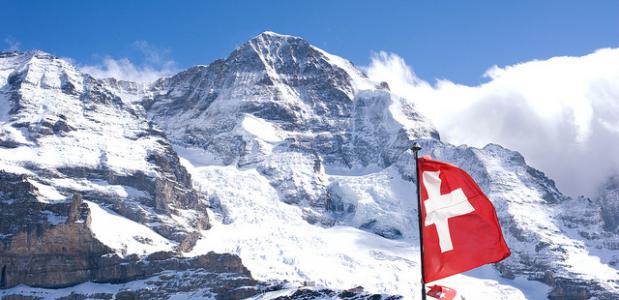Art Review: A 2025 Look At Global Art, 1850-1950

Table of Contents
Realism and its Global Ramifications (1850-1870)
Realism, emerging as a reaction against the Romanticism of the preceding era, prioritized the depiction of everyday life and objective representation. This movement, while originating in Europe, quickly revealed its global ramifications, influencing artistic styles across diverse cultures. The rejection of idealized imagery and emotional excess in favor of portraying the harsh realities of the time was a powerful statement.
-
Gustave Courbet's Influence: Courbet, a central figure of French Realism, championed the ordinary. His works, such as "The Stone Breakers" and "Burial at Ornans," challenged the established art world's preference for historical and mythological subjects. His commitment to portraying the working class and peasant life profoundly impacted the direction of art.
-
Realism Beyond France: The impact of Realism extended far beyond France. Russian Realism, exemplified by Vasily Perov's poignant depictions of poverty and suffering, offered a distinctly national interpretation of the movement. Similar realistic tendencies can be found in other regions, albeit with unique cultural adaptations reflecting their specific societal realities.
-
Socio-Political Context: The rise of Realism was inextricably linked to the socio-political upheavals of the mid-19th century. The Industrial Revolution, social inequalities, and rising political consciousness all fueled the desire for a more truthful representation of the world. Artists used their work to critique social injustices and comment on the rapidly changing landscape.
-
Variations Across Cultures: While sharing a common thread of depicting reality, Realism manifested differently in various geographic locations. The specific themes, techniques, and artistic styles varied depending on the cultural context and the social issues prevalent in each region.
The Rise of Impressionism and Post-Impressionism (1870-1900): A European and Global Perspective
Impressionism, born in France, revolutionized painting with its emphasis on capturing fleeting moments and the effects of light. Artists like Claude Monet, Pierre-Auguste Renoir, Edgar Degas, and others employed short, broken brushstrokes and vibrant colors to portray their impressions of the world.
-
Key Impressionist Artists: Monet's series paintings of haystacks and water lilies, Renoir's depictions of Parisian life, and Degas's studies of dancers exemplified the movement's focus on capturing the ephemeral.
-
Evolution into Post-Impressionism: Post-Impressionism, while rooted in Impressionism, saw artists like Vincent van Gogh, Paul Cézanne, and Paul Gauguin move beyond the purely observational approach. Van Gogh's emotive use of color, Cézanne's exploration of form, and Gauguin's symbolic representations marked a significant shift in artistic expression.
-
Global Influences and Cross-Cultural Exchange: While predominantly European, the impact of Impressionism and Post-Impressionism resonated globally, influencing artists in various parts of the world, albeit in ways shaped by their own cultural contexts. Further research is needed to fully explore non-European responses and parallels.
-
Social and Cultural Contexts: The flourishing of these movements reflected the rapid social and cultural changes of the late 19th century, including urbanization, technological advancements, and the rise of a new middle class.
Modernism's Global Reach: From the Late 19th to Mid-20th Century
Modernism, a broad and multifaceted movement, encompassed a wide range of styles and approaches, including Fauvism, Expressionism, Cubism, and Surrealism. It reflected a profound break from traditional artistic conventions and explored new ways of representing the world.
-
Fragmentation of Artistic Styles: Modernism wasn't a unified style but a collection of diverse artistic responses to the accelerating pace of modern life. The fragmentation of artistic styles reflected the complexity and contradictions of the era.
-
Abstraction and Experimentation: Many Modernist artists embraced abstraction, moving away from representational art and exploring pure forms and colors. This experimentation was driven by a desire to break free from traditional artistic constraints.
-
Global Modernisms: While originating in Europe and North America, Modernism’s influence spread rapidly, shaping artistic movements across the globe. Different regions developed their own unique interpretations of Modernist principles, reflecting their cultural contexts.
-
Interplay with Other Cultural Movements: Modernism interacted with other significant cultural movements of the time, including political ideologies and technological advancements, influencing and being influenced by these broader societal shifts.
The Impact of Colonialism and Cultural Exchange on Global Art, 1850-1950
Colonialism significantly impacted the flow of artistic ideas and styles across the globe. The interaction between colonizers and colonized populations led to both the appropriation of indigenous artistic traditions and the emergence of hybrid styles.
-
Artistic Influences Between Colonizers and Colonized: The exchange wasn't one-sided. Indigenous art forms often influenced European artists, leading to new artistic expressions. However, this exchange was frequently uneven, reflecting the power dynamics inherent in colonial relationships.
-
Emergence of New Artistic Styles: The fusion of different artistic traditions resulted in the creation of new hybrid styles. These styles often reflected a complex interplay between indigenous and colonial influences.
-
Representation of Colonialism: Art played a crucial role in representing and interpreting the experience of colonialism, both from the perspectives of colonizers and colonized populations. Artists used their work to critique colonialism, celebrate indigenous cultures, and express the complex emotions associated with this historical period.
Conclusion
This art review has provided a 2025 perspective on the rich tapestry of "Global Art 1850-1950," demonstrating the diverse artistic expressions and cross-cultural influences that shaped this period. From the realistic depictions of everyday life to the revolutionary styles of Impressionism, Post-Impressionism, and Modernism, the period offers a profound insight into the human experience. Further exploration of individual artists and movements within this timeframe is encouraged to gain a deeper understanding of the complex nuances of "Global Art 1850-1950". Delve deeper into this fascinating era and continue your exploration of Global Art 1850-1950 by researching specific artists, movements, and geographical contexts. Understanding the global reach of art during this period allows us to appreciate its enduring legacy and its continued relevance in shaping contemporary artistic expression.

Featured Posts
-
 Complete Guide To The Nyt Mini Crossword March 26 2025 Answers
May 19, 2025
Complete Guide To The Nyt Mini Crossword March 26 2025 Answers
May 19, 2025 -
 Fighters Honest Confession Ufc 313 Prelim Fight Loss
May 19, 2025
Fighters Honest Confession Ufc 313 Prelim Fight Loss
May 19, 2025 -
 School Employee Among Fsu Shooting Victims Family Background Revealed
May 19, 2025
School Employee Among Fsu Shooting Victims Family Background Revealed
May 19, 2025 -
 2025 Verwachte Daling Luchtreizigers Via Maastricht Airport
May 19, 2025
2025 Verwachte Daling Luchtreizigers Via Maastricht Airport
May 19, 2025 -
 Ufc 313 Post Fight Admission Fuels Robbery Debate
May 19, 2025
Ufc 313 Post Fight Admission Fuels Robbery Debate
May 19, 2025
Latest Posts
-
 Analiza Kladionica Je Li Popravak Marka Bosnjaka Moguc
May 19, 2025
Analiza Kladionica Je Li Popravak Marka Bosnjaka Moguc
May 19, 2025 -
 Where And When Is Eurovision 2025 Official Details Revealed
May 19, 2025
Where And When Is Eurovision 2025 Official Details Revealed
May 19, 2025 -
 Marko Bosnjak Kolike Su Sanse Za Pozitivan Ishod
May 19, 2025
Marko Bosnjak Kolike Su Sanse Za Pozitivan Ishod
May 19, 2025 -
 Sanse Za Popravak Marko Bosnjak I Kladionice
May 19, 2025
Sanse Za Popravak Marko Bosnjak I Kladionice
May 19, 2025 -
 Eurovision 2025 When And Where Will The Contest Take Place
May 19, 2025
Eurovision 2025 When And Where Will The Contest Take Place
May 19, 2025
